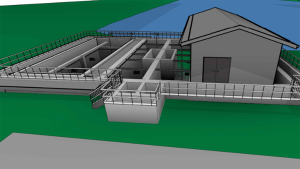Australian-based BHP Billiton has been granted approval by the Saskatchewan government to build the $1.2 billion Jansen project, which could be the largest potash mine in the world.
Australian-based BHP Billiton has been granted approval by the Saskatchewan government to build the $1.2 billion Jansen project, which could be the largest potash mine in the world.
“We are pleased to have received ministerial approval for Jansen and to have reached this significant milestone in the project’s development,” said Tim Cutt, who is president of BHP Billiton’s Diamonds and Specialty Products division.
“We will continue to engage with communities and other stakeholders to seek their input and to keep them informed of progress at Jansen and our other potash development projects.”
BHP Billiton submitted the Environmental Impact Statement for the Jansen project in December 2010.
The Ministry of Environment concluded BHP Billiton has appropriate plans in place to mitigate any adverse impacts while enhancing project benefits.
The project, which is located about 80 kilometres northwest of Regina, is expected to employ an average of 1,900 people during construction.
It will also and create about 1,000 operational jobs once the mine has reached full capacity.
BHP Billiton also expects to pay about C$90 billion in royalties and taxes to the municipal, provincial and federal governments during the life of the mine.
The 7,338-sq.-km Jansen project is estimated to have a 70-year life, with an annual potash production of 8 million tonnes.
At full capacity, BHP estimates that Jansen will be the world’s largest potash mine with a deposit of 3.37 billion tonnes.
It will also be the first new potash mine to be developed in the province in about 40 years.
BHP Billiton announced on 23 June that it had approved US$488 million of further investment to support the development of Jansen in its feasibility study stage.
This decision increases BHP Billiton’s investment in Jansen to a total of $1.2 billion.
This additional capital will be used to complete mine design and engineering, as well as purchase long lead time items.
The new capital will also fund initial site preparation and the construction of the first 350 metres of the production and service shafts.
The feasibility stage of the project began in February with the construction of the refrigeration centre and the drilling of 55,000 metres of wells and 89 freeze holes required for site preparation.
The ground freezing process is undertaken prior to the sinking of the production and service shafts
According to the Environmental Impact Statement, a temporary construction complex will be built for the construction phase of the project.
This phase of the project includes a security office, guard shacks, perimeter fencing, first aid and emergency vehicle area, contractor’s construction offices and construction warehouses.
There is no plan for a construction camp.
The core mine facilities area is predicted to cover 14 square kilometres, which includes the process plant, administration, load-out, storage, warehouse and maintenance buildings, tailings management area, and secondary mining cooling pond.
The mine well field area will be about 73 square kilometres and includes well pads, access roads and pipelines.
Transportation corridors for the project include a 12 kilometre railway spur line and new road segments near the core mine facility.
Vehicle access around and to the core mine facilities consists of upgrading existing roads and constructing three new segments.
The combined length of the three constructed road segments is approximately 9 kilometres.
A number of utilities will be constructed to support the project.
These utilities include an overhead 72 kilovolt electrical transmission line (for construction), an overhead 230 kilovolt electrical transmission line (for operation), water intake pipeline, natural gas pipeline, and telecommunications line.
Utilities will be provided by SaskPower, SaskWater, TransGas, and SaskTel.
It is expected that final approval to proceed with Jansen will be sought from the BHP Billiton Board in the 2012 calendar year.
Based on the current schedule, Jansen is expected to start producing saleable potash in calendar year 2015.
Cutt was appointed president of Diamonds and Specialty Products effective June 1 and he is based at BHP Billiton’s new offices in Saskatoon in the province of Saskatchewan, Canada.
This division of BHP Billiton is relocating from Vancouver to Saskatoon.
It has responsibility for BHP Billiton’s Saskatchewan potash projects as well as a diamond mine in the Northwest Territories and a mineral project in South Africa.
Thirty positions are expected to be added to BHP’s Saskatoon office, which currently employs 69 people.










Recent Comments
comments for this post are closed